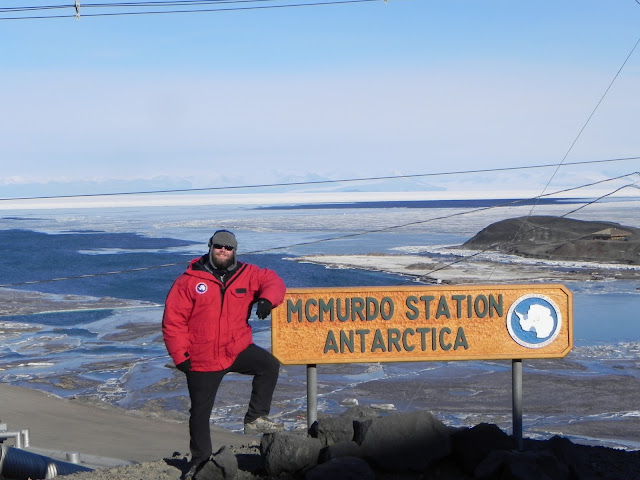First I would like to begin with a bit about the research cruise, then a bit about the science, and then a little bit about myself and why I'm going.
The CLIVAR (climate variability) program has been an important ongoing research since the 1980's to study and attempt to understand the processes involved in creating, maintaining, and/or changing the earth's climate. It's goal is to have repeating lines of measurement through decades of time. The Earth's poles play a huge role in driving the climate system and distributing heat across Earth's surface. This may seem a bit counter-intuitive, so let me explain. Both atmosphere and oceans play a role, but I will focus on the ocean part.
First of all, the polar regions for obvious reasons contain the coldest waters on the planet. This means the water is condensed, as cold objects typically are, making the water heavier than water at other temperatures since there are more particles per volume as they are closer together. Additionally, only fresh water goes into the formation of sea ice, so the salts originally dissolved in the sea water is left behind to dissolve into the surrounding waters. Adding salt and making the water saltier adds the mass of the salt to the water, therefore making the water surrounding polar ice, which is very cold and very salty, the heaviest water on the planet. This heaviest water then will sink and slip beneath other lighter less dense (mass per volume) waters (less salty warmer temperature). As this occurs, the lighter water near the equator flows towards the poles to replace the heavy/densest sinking water while the denser waters ultimately will rise or "upwell" to the surface again due to other processes far away from the poles. This creates a cyclical process that ultimately takes a very long time to complete (hundreds to thousands of years). The cycle is important to climate in many ways with two notable ones described here. The first is that dissolved carbon dioxide is pulled down with the sinking water thereby removing some of it from the atmosphere, however it is likely returned to the atmosphere a thousand years later when the water is returned to the surface. The second is that warmer waters are cycled towards the poles thereby providing a means of delivering heat to the poles and temperate regions of the world allowing them to be warmer than they otherwise might be. This is all of course a simplified view of what really happens. The full process is quite complex and not fully understood, which is the purpose of this research cruise.

The voyage will ultimately begin from the United States Antarctic base, McMurdo Station, aboard the National Science Foundation's icebreaking vessel, the Nathaniel B. Palmer. From there we will traverse the Ross sea, named after Antarctic explorer James Clark Ross and home to the terminus of the world's largest continental ice sheet, the Ross ice shelf. Then we will traverse the edge of the continent, heading east to the Antarctic peninsula and then heading across the Southern Ocean to Chile where we complete our voyage. Throughout the cruise, we will be stopping at planned stations to take measurements of the ocean throughout the water column using oceanographic instrumentation. Particularly we typically will drop a Conductivity, Temperature, Depth (CTD) instrument. CTD's determine salinity by measuring conductivity, temperature directly, and depth from pressure whichs allows us to determine the density of the water and thus identify different masses of water. After gathering many CTD casts throughout our cruise, it allows us to develop a picture of the types of water and their relation and movement through the region. In addition to the CTD, we measure many different variables by a ring of bottles that are secured around the CTD on a metal cage. The whole assembly is referred to as a Rosette. A special cable allows us to close the bottles at different depths and capture water from that depth. When the rosette is returned to the deck of the ship, we can then draw water samples from the bottles that can then be analyzed in different ways, such as checking for dissolved Carbon Dioxide or Oxygen levels or determining chemical composition. Ultimately our collection of so many different variables gives us an idea of the state of the ocean there and the processes at work and we are able to compare them to previous research cruises to see how things have changed over time.
 |
| The CTD Rosette. Bottles around the centered CTD. |
I am a
physical oceanography student and I was chosen to go on this cruise almost solely on the basis of I was available and am a good candidate for gaining more field research experience. My research actually has no relation to climate change, or to Antarctica. Lucky me! I may not have any research currently dealing with this, but I am very glad to be helping out and to be a part of something big in the oceanographic field. Thanks for reading the first post, I promise that the rest will not be nearly as lengthy. I expand on the science and travels in further posts.






















